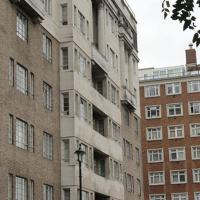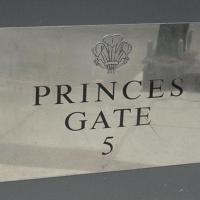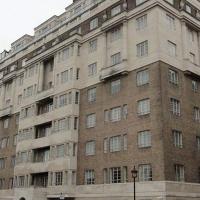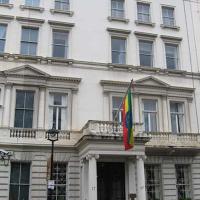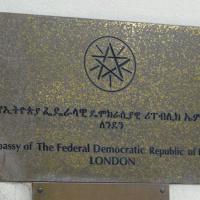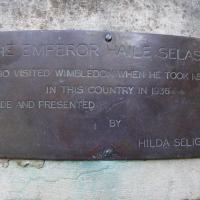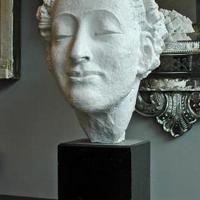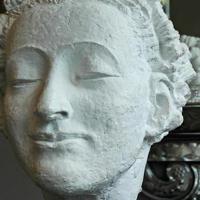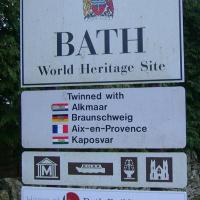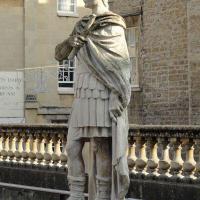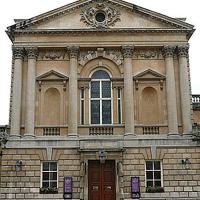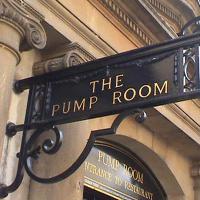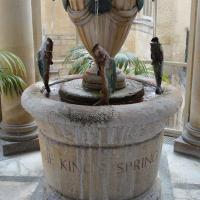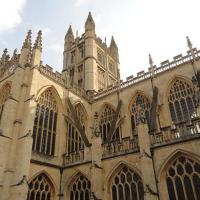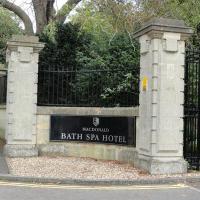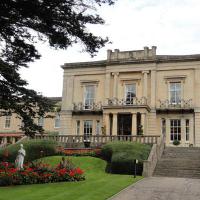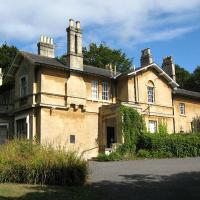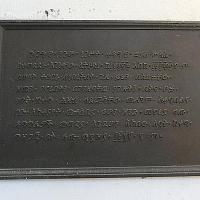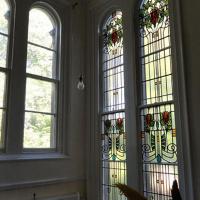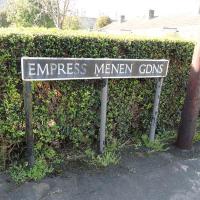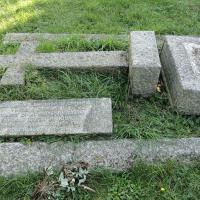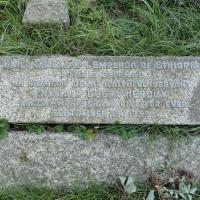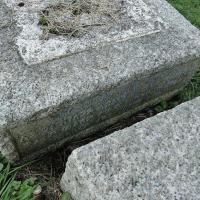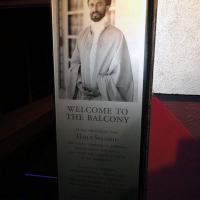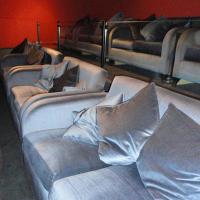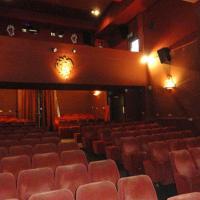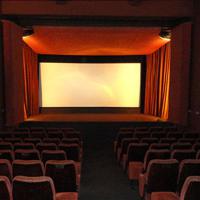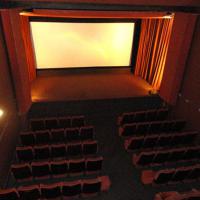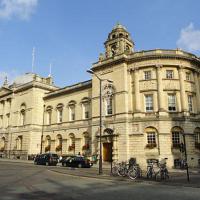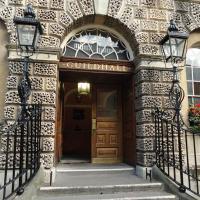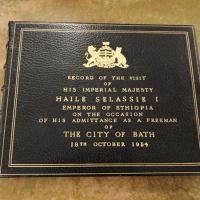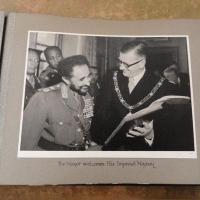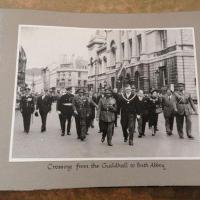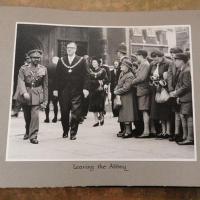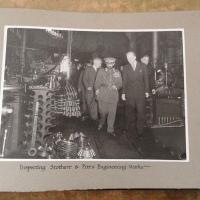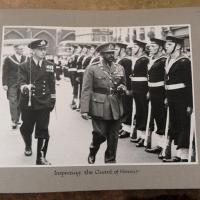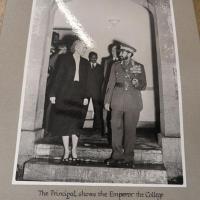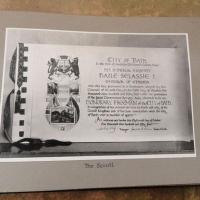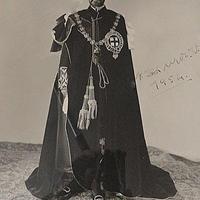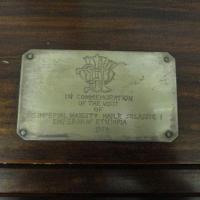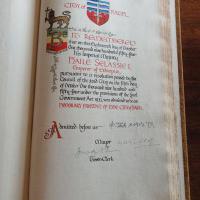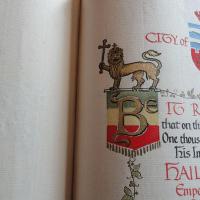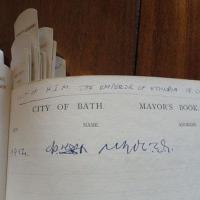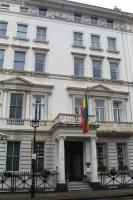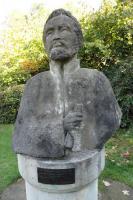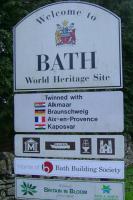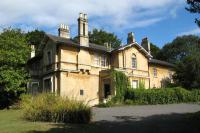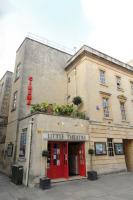Dreaming of a new Roman Empire and still vindictive after the bitter defeat the Italian army had suffered at the Battle of Adwa in 1896i, Benito Mussolini’s fascist troops invaded Ethiopia in October of 1935.
Against an enemy armed with modern weaponryii and even prepared to use mustard gasiii, the poorly organized and armed Ethiopian army stood little chance. On April 1st 1936, after a series of consecutive defeatsiv, Emperor Haile Selassie I and his entourage were advised to leave the country.
The Emperor would spend the next five years living in exile in the United Kingdomv; a period he described as follows: “Our life at Bath was very hard. We also encountered great financial difficulties.” (“My Life And Ethiopia’s Progress, Volume 2, The Autobiography Of Emperor Haile Selassie I”, Frontline Distribution International, 2007)
In October 2011, together with Jef Van der Aa, anthropologist and, like me, fascinated by the figure of Haile Selassie I, I travelled to the UK to investigate which traces remained from this remarkable footnote in 20th century history.
LONDON & WIMBLEDON
On June 3rd 1936, after stops in Jerusalem and Gibraltarvi, the Emperor and his entourage arrived at the British port of Southampton aboard the SS Orford, continuing their voyage to London by train. In the capital an apartment was put at their disposal by Sir Elly Kadoorievii; the building at 5 Princes Gate being located ideally at just a few paces from the address of the Ethiopian legationviii at 17 Princes Gate.
It didn’t take too long, though, before Her Majesty’s Government made it clear they didn’t want to financially support the Ethiopian imperial householdix, so Haile Selassie I was forced to start looking for a residence of his own.
One of the first locations he decided to check out was Wimbledon, then and still, part of the greenbelt just south of the capital. At the invitation of Dr. Richard Seligmanx and his wife Hilda, the Emperor spent a few days at Lincoln Housexi in June of 1936. The lady of the house used the opportunity not only to throw a big fundraiser in aid of the Ethiopian cause, but also being a sculptress, she had the Emperor pose for a portrait bust. After her death in 1955, the stone bust was donated to Wimbledon Borough Council and placed on the grounds of Cannizaro Park. This public park used to be the private garden of Cannizaro House, these days a luxury hotel and an absolute must for those wanting to try the legendary English afternoon tea. Hilda Seligman also made a bust of princess Tsahai, Haile Selassie’s youngest daughter who passed away in 1942 at the age of twenty-one. The head used to be displayed at Lincoln House, but recently came up for sale on the open market.
BATH
The fact the Emperor eventually found himself relocating to Bath, was probably due to more than just coincidence. The British government didn’t hide the fact they rather had the displaced monarch move as far away from London as possible. For the Emperor, Bath offered an ideal solution: the small city was located in the green surroundings of Somerset, but still only a train ride away from the British capital. Already from Roman times, Bath had been known as a thermal spa, something the Ethiopian imperial family was undoubtedly quite familiar with as the location of the Ethiopian capital Addis Ababa had been chosen for exactly the same reason by Emperor Menelik II and his spouse Empress Taituxii.
Initially the Emperor stayed at the luxurious Spa Hotel, nowadays known as the Macdonald Bath Spa Hotel. As this hotel turned out to be a bit too high-priced for our budget, we opted for the centrally located Best Western Abbey Hotel, only a stone’s throw away from the Roman Baths and the Guildhall, instead. The imperial funds were far from limitless, though, so the Emperor urgently had to find a suitable estate to house his family and the other members of the imperial household. It wasn’t long before his eye fell on Fairfield House, a large Victorian villa just north of the city center that had belonged to Mrs. Campbell-White (a widow who had passed away abroad) and had been laying empty for some time. The house still stands, but can only be visited by appointmentxiii. Not much remains to remind the visitor of the time Haile Selassie I spent there, though. At the main entrance two plaques, one in English, the other in Amharic, remind visitors of the fact Haile Selassie I once lived there and inside, scattered throughout the house, a number of framed portraits of the Emperor and his family still adorn the walls. Of course the house also has a special significance for members of the Rastafarian community, and to accommodate their needs an improvised spiritual space was created.
For those up for it, a few other points of interest can be found within walking distance from Fairfield. A part of the grounds was converted into a protected housing scheme and fittingly named Empress Menen Gardens. When in September of 1938, Heruy Walda-Selassexiv - the Ethiopian foreign minister and one of Haile Selassie’s most trusted advisors - suddenly passed away, he was buried at the nearby Locksbrook Cemetery. His remains were later repatriated to Ethiopia, but his tombstone still remains.
If you’re spending the night in Bath, why not catch a movie at the Little Theatre cinema? Haile Selassie I used to visit this tiny independent art deco movie theatre to watch the latest newsreels about the war in his country, a fact visitors of the cinema are proudly remembered of by means of a plaque put up after a restoration project carried out in 2010.
Haile Selassie I, the somewhat undesired, ousted head of state of Ethiopia, would eventually return to his native country in 1941xv. His next voyage to the United Kingdom would prove to be of a very different nature.
1954 - STATE VISIT
As part of a diplomatic world tour that would take him to twelve nations in six monthsxvi, Haile Selassie I paid a state visit to the United Kingdom in 1954. This time the British government spared no expense to welcome the Ethiopian monarch.
Included in the official program were a state banquet hosted by Her Majesty Queen Elizabeth II, a luncheon with Prime Minister Winston Churchill at 10 Downing Street and a debate at the House of Commons.
On a personal level though, above all else, the Emperor wanted to thank the people who had been at his side during those dark days in the nineteen thirties. The Seligmans in Wimbledon were honored with a short visitxvii and in Bath the Emperor stayed one last time at his beloved Fairfield. During the Second World War the building had been used shortly as an emergency shelter for evacuated babies and toddlersxviii, but after that it had stood empty for years. In 1958 Haile Selassie I officially transferred the house to the city of Bath and since then it was used as a retirement home for the elderly. Since 1995 BEMSCAxix, an organization led by the charismatic Pauline Swaby-Wallace, offers the elderly of the Asian and Caribbean communities in Bath a place to meet.
On the occasion of, what would turn out to be, his last visit to the city of Bath, the Emperor was knighted Freeman of the City, an honor bestowed only very rarelyxx. In the Guildhall (accessible by appointment only) a number of traces reminding that festive day can still be found: there’s the Freemen’s Book containing a beautifully illustrated charter and even an Ethiopian tapestry the Emperor offered the city as a token of his gratitude. Unfortunately the two large elephant tusks that were also part of the Emperor’s gift were stolen at one point, leaving only the wooden base to wither away in the city archives. In the guestbook of the city we found the Emperor’s signature, but also that of his grandson, prince Ermias Sahle Selassie, who visited the city for much the same reasons as ours back in 2002. The city of Bath also compiled a choicely illustrated photo book to mark the occasion. The original can be viewed in the archive section of the Guildhall, but prints of the photos can also be ordered on the website: http://www.bathintime.co.uk.
HAILE SELASSIE I AS A TOURIST ASSET
The sad reality is that Fairfield needs your help as the building urgently needs restoration. Even though it’s classified as an “English Heritage Grade II listed building”xxi, the necessary funds to restore the villa to its former glory are lacking and there are even whispers about a possible sale.
To put a stop to all this and breathe new life into this unique heritage site, Shawn ‘Naphtali’ Sobers (senior lecturer in photography and media at the University of the West of England, director of the documentary “Footsteps Of The Emperor”xxii and also our guide during our stay in Bath), in cooperation with BEMSCA, created the website http://houseofhismajesty.wordpress.com.
For the moment, those wanting to make a similar trip to Bath are still left to their own devices. The writer hopes this article might offer some assistance, but it should be noted that extensive negotiations are being conducted with Bath Tourist Board with the intention of making it possible to offer a themed package or a walking route in the future.
Footnotes
i The Battle of Adwa was fought on 1 March 1896 near the town of Adwa, Ethiopia, in Tigray. It was the climactic battle of the First Italo-Ethiopian War, securing Ethiopian sovereignty and ending Italian attempts at its conquest for another three and a half decades. As a direct result of the battle, Italy signed the Treaty of Addis Ababa, recognizing Ethiopia as an independent state. Almost forty years later, on 3 October 1935, the Italians launched a new military campaign endorsed by Benito Mussolini, the Second Italo-Ethiopian War. (www.wikipedia.org)
ii The Ethiopian offensive was ultimately stopped due to the superiority in modern weapons like machine guns, tanks and heavy artillery of the Italian forces. (www.wikipedia.org)
iii After the December 26 1935 murder of downed Italian pilot Tito Minniti, Marshal Badoglio was given permission to use chemical warfare agents such as mustard gas. Mussolini stated that the gas used was not lethal, but only a mixture of tear gas and mustard gas. The Italians attempted to justify their use of chemical weapons by citing the exception to the Geneva Protocol restrictions that referenced acceptable use for reprisal against illegal acts of war. They stated that the Ethiopians had tortured or killed their prisoners and wounded soldiers. (www.wikipedia.org)
iv In February and March of 1936, the Ethiopian troops had faced consecutive defeats at Tembien, Amba Aradam, Shire and Maychew. On April 26, 1936, when Marshal Badoglio launched his "March of the Iron Will" from Dessie to Addis Ababa, he faced no meaningful Ethiopian resistance. (www.wikipedia.org)
v Apart from Britain, Switzerland also offered the Emperor asylum, but because the Swiss would only accept him as a refugee if he refrained from all political activity, Haile Selassie I rejected the offer.
vi The Ethiopian exiles had left Djibouti aboard the British cruiser HMS Enterprise. They were bound for Jerusalem in the British Mandate of Palestine, where the Ethiopian royal family maintained a residence. Leaving the Holy Land, Haile Selassie I and his entourage sailed for Gibraltar aboard the British cruiser HMS Capetown. From Gibraltar, the exiles were transferred to the SS Orford, an ordinary liner. By doing this, the government of the United Kingdom was spared the expense and embarrassment of a state reception. (www.wikipedia.org)
vii Philanthropist and member of a wealthy Jewish family from Baghdad that had large business interests in the Far East. In the mid-nineteenth century the family relocated to Bombay (present-day Mumbai) in India. With his brother, Sir Ellis Kadoorie, he made his fortune in banking, rubber plantations, electric power utilities and real estate, and gained a major share-holding in Hong Kong Hotels Limited. (www.wikipedia.org)
viii A legation was the term used in diplomacy to denote a diplomatic representative office lower than an embassy. Where an embassy was headed by an Ambassador, a legation was headed by an Envoy Extraordinary and Minister Plenipotentiary. The distinction between a legation and embassy was gradually dropped following World War II. All diplomatic representative offices are now designated as embassies or high commissions. (www.wikipedia.org)
ix There is no evidence that the Emperor was told to leave London, but Sir Elly Kadoorie wanted his house back and it was made clear that the Emperor should avoid public appearances which might cause embarrassment to Her Majesty’s Government. In their briefs and minutes the officials in the Egyptian-Ethiopian section of the Foreign Office were critical of the eminent exiles, and one of them minuted: “... I feel sure that if we don’t try to exercise some moderation, our guest will be both a nuisance and a danger.” (“The Emperor Haile Selassie I in Bath 1936 - 1940”, Lutz Haber, 1992)
x Dr Richard Seligman invented the plate heat exchanger, a type of heat exchanger that uses metal plates to transfer heat between two fluids, in 1923 and revolutionized methods of indirect heating and cooling of fluids. He founded the Aluminium Plant & Vessel Company Limited in 1910, a specialist fabricating firm supplying welded vessels to the brewery and vegetable oil trades. (www.wikipedia.org)
xi Previously known as Parkside, Lincoln House was renamed after Isaac Seligman's family home at Clapham Common (a property said to have been visited by Abraham Lincoln). The property was sold by Seligman in 1958 and the house seems to have been demolished c.1959. (Wimbledon Boro' News, 20/06/1958)
xii Empress Taitu initially built a house for herself near the Filwoha hot mineral springs - “filwoha” meaning “boiling water” in Amharic - where she and members of the Shewan royal court liked to take mineral baths. Soon, other members of the Shewan nobility and their staffs and households settled in the vicinity. Negus Menelik expanded his wife's house to become the Imperial Palace, which remains the seat of government in Addis Ababa today. (www.wikipedia.org)
xiii See 1954 - STATE VISIT
xiv Heruy Walda-Sellase, 1878 - 1938, was an Ethiopian writer and director of the government press who encouraged and significantly advanced the writing and publication of books in Amharic, Ethiopia's national language. After Ras Tafari's accession to the imperial throne as Haile Selassie in 1930, Heruy was appointed foreign minister. (www.encyclopedia.com)
xv On 18 January 1941, during the East African Campaign, Haile Selassie crossed the border between Sudan and Ethiopia near the village of Um Iddla. The standard of the Lion of Judah was raised again. Two days later, he joined Gideon Force, a small British-led African regular force which was already in Ethiopia and preparing the way. Italy was defeated by a force of the United Kingdom, the Commonwealth of Nations, Free France, Free Belgium, and Ethiopian patriots. On 5 May 1941, Haile Selassie entered Addis Ababa, five years to the day since his 1936 exile. On May 15th 1941 a victory party was held at Fairfield. A few months later the Empress and Princess Tsahai slipped away home. Princess Worq and her children followed in 1943. (www.wikipedia.org & “The Emperor Haile Selassie I in Bath 1936 - 1940”, Lutz Haber, 1992)
xvi On December 6, 1954 Haile Selassie I returned to Ethiopia after a six month world tour, visiting Canada, Mexico, Yugoslavia, Greece, Britain, France, The Netherlands, West Germany, Sweden, Norway, Denmark, Switzerland and Austria. (www.nazret.com)
xvii His Imperial Majesty Haile Selassie I Emperor of Ethiopia, King of Kings, Elect of God, conquering Lion of the Tribe of Judah paid a flying visit to Wimbledon on Tuesday. He came, after his triumphant State welcome to Britain, to thank Mr. and Mrs. Richard Seligman for their friendship in his darkest hour. It was his second visit to their Parkside mansion. In June 1936, only a month after the Fascist invaders of Ethiopia had compelled him to flee into exile in Britain, he was the guest of honour at a garden party held by Mrs. Seligman as a gesture of sympathy and support for his cause. On Tuesday, however, the reception was indoors. There was a persistent drizzle and it was growing dark as the Emperor arrived. Preceded by two police outriders and a police car, his limousine flew the green, yellow and red Ethiopian standard. Behind were two more limousines with his party. Haile Selassie I stepped out briskly, to be greeted at the door by Mr. Seligman and Mrs. Corbett Ashby. He signed the visitors’ book and was ushered through to the lounge, where he was welcomed by Mrs. Seligman, who, recovering from an operation, sat in a wheel-chair. The Emperor had passed, in the hall, a head of his daughter, Princess Tsahai, a nurse at Guy’s Hospital, who died at 21. It had been sculptured by Mrs. Seligman. Gabrielle, nine-year-old granddaughter of Mrs. Seligman, presented His Imperial Majesty with a bouquet and received from him, as a memento, a gold medallion. He also gave one to her elder sister Hilda Grace, who attended her grandmother. After their departure Mrs. Seligman told us: “The Emperor was so charming; we talked in French and he thanked me for what I had done for him. It’s all so different from 1936. The Government ignored him then. Now, I suppose, they are trying to make it up.” (“Emperor Haile Selassie In Wimbledon, He remembers the friends of his exile”, Wimbledon Boro’ News, 29/10/1954)
xviii Residents were evacuated to Fairfield House in Bath, from Seagry Manor, Chippenham in 1943. In 1944 Fairfield Home accommodated 35 infants between the ages of two weeks and two years. After the war in 1946 residents moved to Saville House Nursery also located in Bath. (www.hiddenlives.org.uk)
xix Bath Ethnic Minority Senior Citizens Association
xx Apart from Haile Selassie I, in the 20th century the following people were also honored with the title of Freeman of the City of Bath: Field Marshal Frederick Sleigh Roberts (1902), Sir Donald Alexander Smith (1911), Maharao Shri Khengarji III of Cutch, William Morris Hughes Prime Minister of Australia, William Ferguson Massey Prime Minister of New Zealand and Frederic Harrison (1921), Field Marshal Douglas Haig (1925), Thomas Henry Thynne, 5th Marquess of Bath (1929), Sir Winston Leonard Spencer-Churchill (1950) and Baron Yehudi Menuhin (1966). The different military regiments that were also rewarded with the honor are not included in this list.
xxi Grade II buildings are nationally important and of special interest; 92% of all listed buildings are in this class. (www.english-heritage.org.uk )
xxii HTV WEST, 1999


